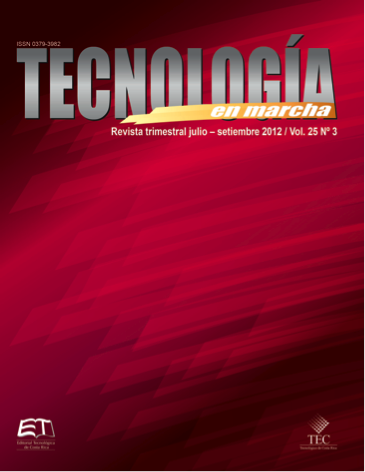Effect of NaCl and thermoperiod on seed germination of Suaeda mexicana (Standl.) Standl. (Chenopodiaceae)
Main Article Content
Abstract
In this study, we assessed the effect of NaCl and thermoperiod on germination of halotolerant plant Suaeda mexicana, in three types of seeds: without testa, black testa and brown testa.The three thermoperiod were 0o C/20o C, 5oC/25oC and 10o C/30o C. Were evaluated seven concentrations of NaCl (200, 400, 600, 800, 1000, 1500 and 3000 mM) and distilled water as a control under a photoperiod of 12 h light and 12 h darkness.
The best results indicated that germination in the thermoperiods 5o C/25o C and 10o C/30o C are about 97% for the three types of seeds. At 0o C/20o C thermoperiod in seeds without testa 72% was obtained; coffee seed testa was 7% and 1% black.
Adding NaCl reduces the cumulative germination percentage in 20 days, but there is a different response depending on the type of seed. Black testa seed did not germinate from the lowest concentration of NaCl (200 mM).
The brown seed germination was the highest in the thermoperiod 10o C/30o C con 21%, decrease in 5o C/25 oC with 4% and is zero in the thermoperiod of 0o C/20o C. Finally the seed without testa is the best response to salinity, the highest germination was in 10 o C/30 o C thermoperiod with 83%, decreases in 5o C/25o C with 50% and 0o C/20o C thermoperiod 30%.
These results provide the basis for Suaeda mexicana, will be considered a potentially useful species for biomass generation in irrigated saline environments.
Article Details
Los autores conservan los derechos de autor y ceden a la revista el derecho de la primera publicación y pueda editarlo, reproducirlo, distribuirlo, exhibirlo y comunicarlo en el país y en el extranjero mediante medios impresos y electrónicos. Asimismo, asumen el compromiso sobre cualquier litigio o reclamación relacionada con derechos de propiedad intelectual, exonerando de responsabilidad a la Editorial Tecnológica de Costa Rica. Además, se establece que los autores pueden realizar otros acuerdos contractuales independientes y adicionales para la distribución no exclusiva de la versión del artículo publicado en esta revista (p. ej., incluirlo en un repositorio institucional o publicarlo en un libro) siempre que indiquen claramente que el trabajo se publicó por primera vez en esta revista.

